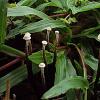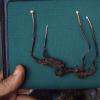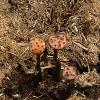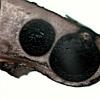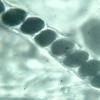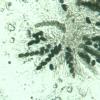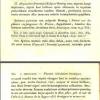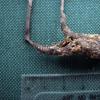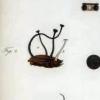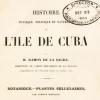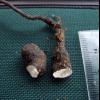
04-01-2026 17:45
 Stephen Martin Mifsud
Stephen Martin Mifsud
I was happy to find these orange asmocyetes which

03-01-2026 13:08
Niek SchrierHi all,We found groups of perithecia on a Lecanora

29-12-2025 17:44
Isabelle CharissouBonjour,J'aimerais savoir si d'autres personnes au

02-01-2026 17:43
MARICEL PATINOHi there, although I couldn't see the fruitbody, I

01-01-2026 18:35
Original loamy soil aside a artificial lake.The co

31-12-2025 19:27
Collected from loamy soil, at waterside (completel
A Poronia sp. from Panama
Esquivel-Rios Eduardo,
09-10-2012 22:09
I found this Poronia in cow dung, have a large sclerotia between the dung and soil, first have a conical cap but later is flat with peritecias in the upper surface. May beô any can help in the species.
Martin Bemmann,
09-10-2012 22:26

Re : A Poronia sp. from Panama
Hi Eduardo,
a long stalked species of Poronia is P. oedipus.
it is recorded from Panama: http://www.pnwfungi.org/pdf_files/manuscripts_volume_4/naf20093.pdf?
Regards
Martin
a long stalked species of Poronia is P. oedipus.
it is recorded from Panama: http://www.pnwfungi.org/pdf_files/manuscripts_volume_4/naf20093.pdf?
Regards
Martin
Martin Bemmann,
09-10-2012 23:42

Re : A Poronia sp. from Panama
As I see now, you triggered a discussion about your find already here: http://mushroomobserver.org/98358?user_locale=es-ES?
However, here is the protologue of P. oedipus by Montagne (1840) attached.
Regards
Martin
However, here is the protologue of P. oedipus by Montagne (1840) attached.
Regards
Martin
FELIPE SAN MARTûN,
10-10-2012 02:35
Re : A Poronia sp. from Panama
The above-depictedô fungus is a species of Poronia. Poronia can be put apart from Podosordaria by its anamorph whichô produce disarticulatingô conidiogenous cellsô now assignable to theô form-genus Lindquistia.
And see:Mycol. Res. 104 (12). 2000. Pag. 1417.
And see:Mycol. Res. 104 (12). 2000. Pag. 1417.
Esquivel-Rios Eduardo,
10-10-2012 03:17
Re : A Poronia sp. from Panama
Yes, is my original post in Mushroom Observer,There is a great discussion on this specimen, but there are different opinions.ô ô By the way,ô Montagneô mentions "bulbous" base, but as we see in this specimen the base is a large ovoid sclerotia, and this feature is not mentioned in the P. oedipus reported by Piepenbring in Panama.
Peter Welt,
10-10-2012 11:01

Re : A Poronia sp. from Panama
This could Xylaria pileiformis (Berk.) Curr. (Poronia pileiformis) be.
http://www.ascofrance.com/forum/11959/xylaria-guepini
ô
ô
Poronia oedipus (Mont.) Mont is smaller and has no bulb.
We have received a record from Panama Mrs Piepenbring.
Peter
http://www.ascofrance.com/forum/11959/xylaria-guepini
ô
ô
Poronia oedipus (Mont.) Mont is smaller and has no bulb.
We have received a record from Panama Mrs Piepenbring.
Peter
FELIPE SAN MARTûN,
10-10-2012 18:55
Re : A Poronia sp. from Panama
Amigo: a juzgar por la parte fûˋrtil madura, se trata de una especie de Poronia. CuûÀl es el tamaûÝo de las ascosporas? Como es la lûÙnea germinal? Las ascosporas estûÀn rodeadeas de una envoltura hialina diferente al perisporio (en caso de que ûˋste sea visible al poner la ascospora en contacto con KOH al 5%)? Presentan las ascosporas uno o dos apûˋndices globulares en los extremos?
Saludos.
Saludos.
Peter Welt,
10-10-2012 19:59

Re : A Poronia sp. from Panama
Hello Felipe,
of course I also know that for the determination of the type many factors are important. However, there are to my knowledge only such a great kind to manure, which I would describe as Poronia pileiformis . You got yourself but Xylaria (Acta Botanica Mexicana 42, 1998) called. Do you now have a another opinion?
Peter
Martin Bemmann,
10-10-2012 21:28

Re : A Poronia sp. from Panama
Hi,
I attach the description by Montagne on Poronia oedipus (little more extended as in the protologue) as he gave it in de la Sagras volumes on the natural history of Cuba (for quotation I add the title too). I only have a poor copy of the figures to it. (who has a higher resolution copy of the "Atlas" ?). This one is from the New York Public Library site: http://tiny.cc/pxazlw?
My impression is that what he describes as the bulbous base of the stipe is merely the sclerotium. What do you think?
Regards
Martin
I attach the description by Montagne on Poronia oedipus (little more extended as in the protologue) as he gave it in de la Sagras volumes on the natural history of Cuba (for quotation I add the title too). I only have a poor copy of the figures to it. (who has a higher resolution copy of the "Atlas" ?). This one is from the New York Public Library site: http://tiny.cc/pxazlw?
My impression is that what he describes as the bulbous base of the stipe is merely the sclerotium. What do you think?
Regards
Martin
Esquivel-Rios Eduardo,
11-10-2012 01:01
FELIPE SAN MARTûN,
11-10-2012 05:55
Re : A Poronia sp. from Panama
Dear Peter: My concepts of Poronia erici, P. oedipus and P. punctata are in Acta BotûÀnica Mexicana (1998). 42:15-23. There, I left Xylaria pileiformisô sensu Padenô because (asô I wrote elsewhere) I was, and still do, not acquainted with its anamorph, even though I had the strong feeling it is a Poronia (less plausible Podosordaria), judging its gross morphology, softness, habitat, and ascospore type.
Greetings!
Greetings!
FELIPE SAN MARTûN,
11-10-2012 06:11
Re : A Poronia sp. from Panama
Estimado Eduardo: El tamaûÝo de las ascosporas cae en el rango de las de Poronia oedipus, aunque la presencia de esa estructura tipo esclerocio en tu colecciû°n es desconcertante pues no la he visto ni en mis ejemplares de P. oedipus ni en la literatura referida a dicha especie. En mi experiencia P. oedipus posee una base bulbosa y nunca (quizûÀs por su ausencia o por error al colectarla) he presenciado tal rizomorfo esclerû°tico.
Saludos!!!
Saludos!!!



